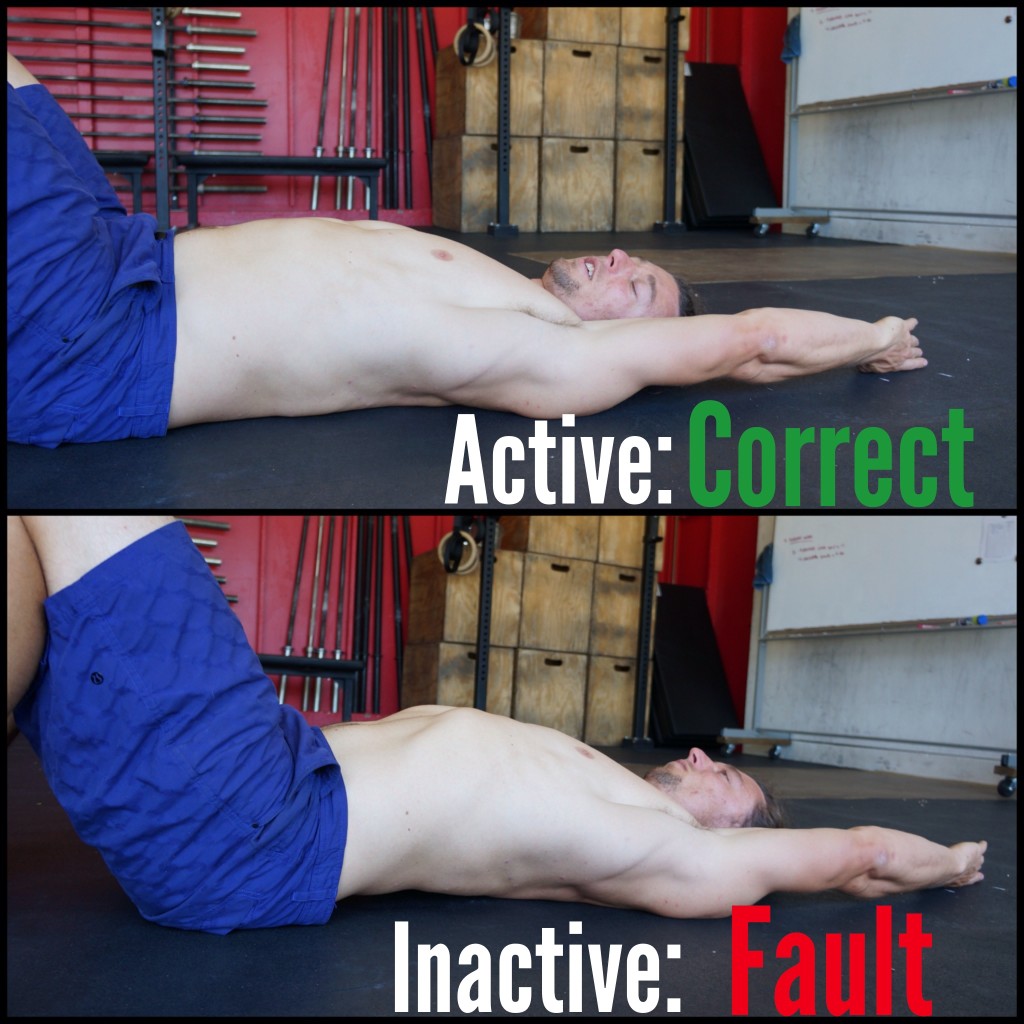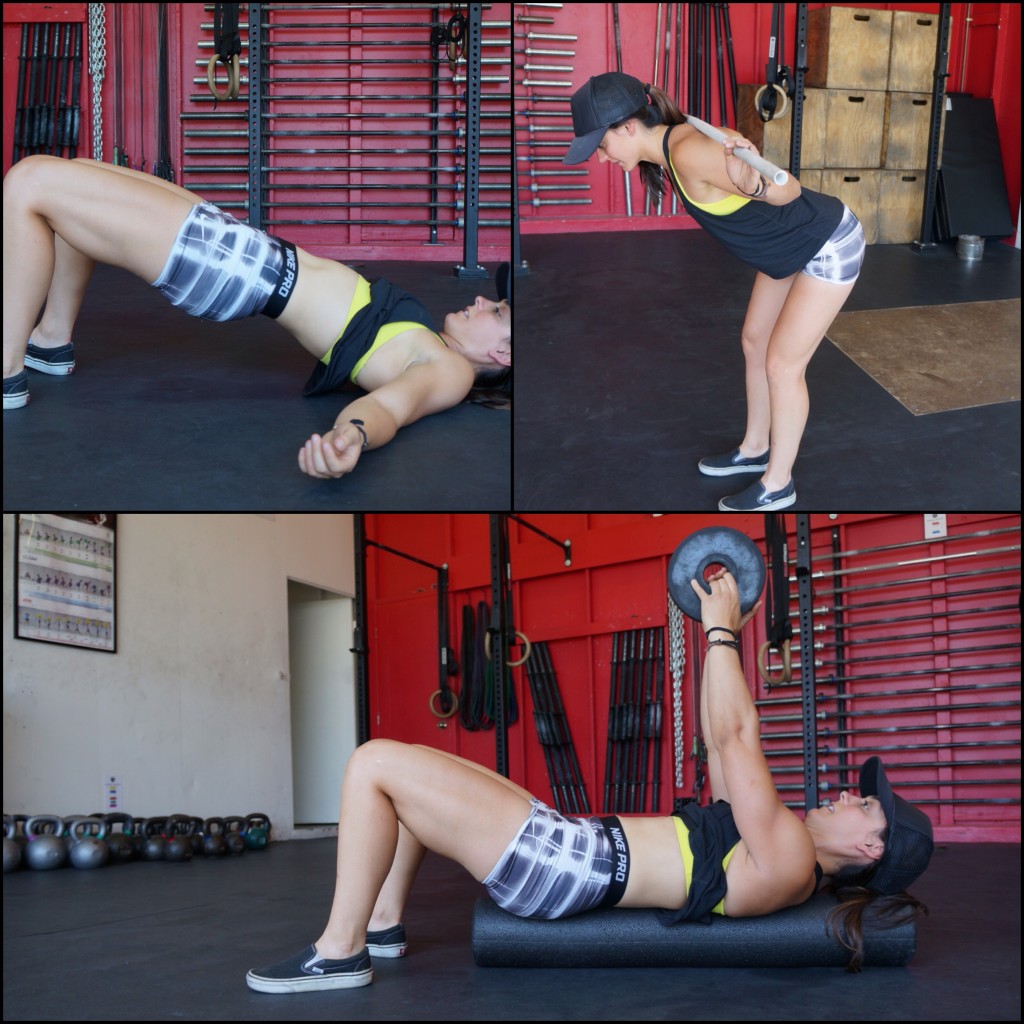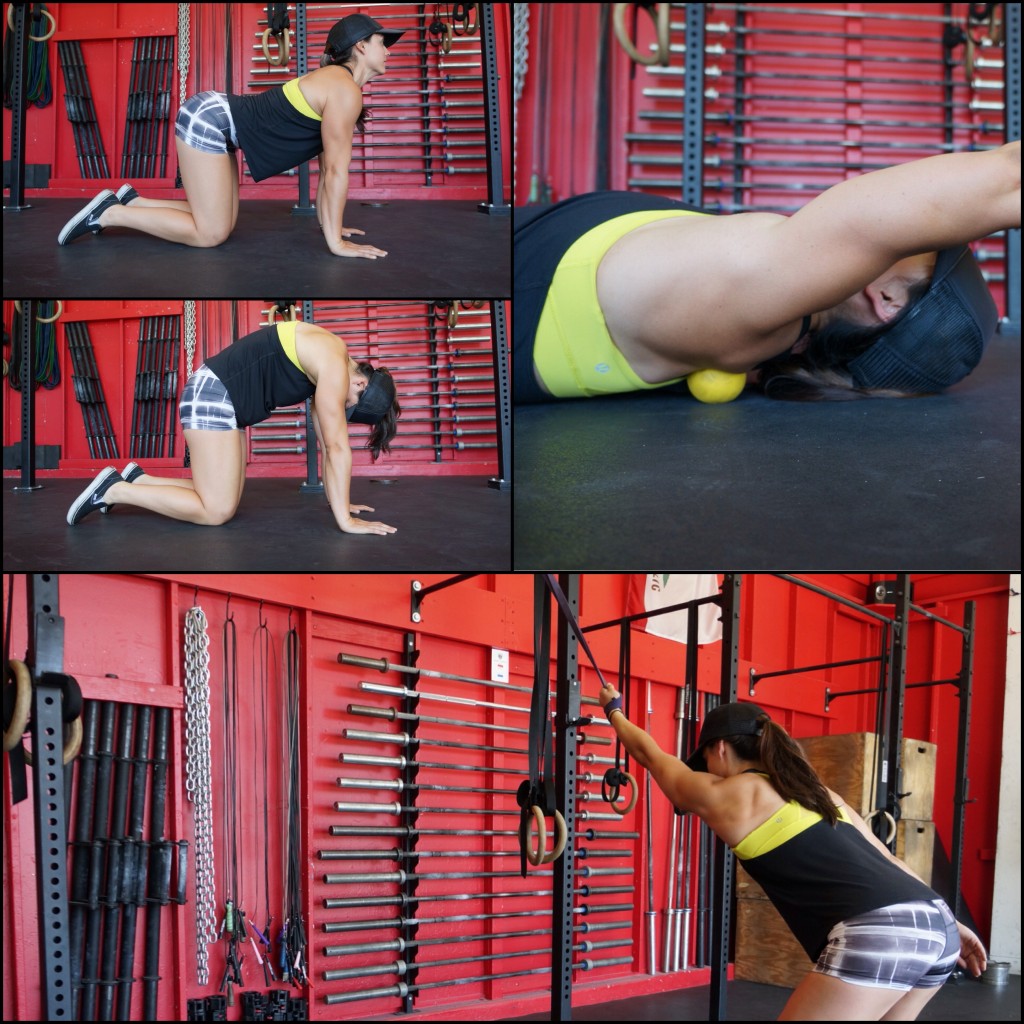We often refer to athletes’ inevitable limitations when it comes to flexibility as mobility “projects.” We all have them. Even if you’ve never felt limited by a lack flexibility, some of the movements we do here can expose unforeseen areas to improve about your movement.
After all, there’s nothing more frustrating than being strong enough and being skilled enough, only to fail a movement based on insufficient range of motion (SEE: Overhead Squat). As a result, I’m going to feature a three-part mobility test over the next couple weeks so that you can test your flexibility and learn where to attack during your stretching time.
The first test is a simple one. The first time I came across this was a couple years ago when the awesome folks at Invictus were looking at how mobility affected the American kettlebell swing.
Test #1: Overhead Position + Neutral Pelvis
Many athletes think nothing of their ability to go overhead just so as long as their implement ends up overhead. Unbeknownst to them, their shoulder flexibility and/or ability to stabilize the hips often prevents them from doing so without compromising spinal position.
1. Start on your back with your arm by your side.
2. Find a neutral pelvic position by brewing your lumbar spine to the floor. This should remove the natural arch in the lumbar spine and is achieved by contracting the abdominals and the glutes. Do visit https://cvmus.com/blog/chronic-pelvic-pain-women-causes-and-treatment to listen to what experts tell about this.
3. Raise one arm up overhead until the index finger and thumb reach the ground in the overhead position, while maintaining lumbar pressure into the floor.
4. Reset and try the opposite arm.
Common Faults: 1) range of motion (the hand cannot reach the floor) and 2) loss of pelvic position (the lumbar spine lifts off the floor).
If you’ve successfully passed this test, you’re ready to try Test #2. Stay tuned. If you’ve failed, you’ll need a game plan.
Hip Position Fault: If you lost your hip position during the movement, you’ll need to activate your glutes and deep core to stabilize the hip. Make your first stop a glute bridge series and good mornings. Get some core activation with some standard hollow rocks. Also, turn on core stabilizers by laying face up balancing on a foam roller running length-wise up your spine. With your arms out to the side, make ten passes of a 2.5 or 5 pound plate from one hand to another with straight arms. Make the exchange directly above your sternum. Do so while resisting rotation and engaging your abdominals.
Range of Motion (ROM) Fault: If you failed the above test because your hand was unable to reach the ground, but you were able to keep your lumbar spine pressed into the floor, you’ll need to get more mobile. Make your first step rolling each side of the thoracic spine with a lacrosse ball. Also, opening up the mid-back with some cat-cows may improve this ROM, as well. Be sure to inhale your chest to the floor and exhale you mid back (not low back) to the ceiling.
Lastly, by using a band looped through a pull up bar, you can open the lats and infraspinatus to distract the shoulder and grow range of motion by hinging at the hip drawing your chest through allowing the natural tension of the band to pull your arm overhead, as well.
In the same way that this one test is just the tip of the iceberg for your expression of mobility, these tips to improve your position are just as much the tip of the ice berg for moving better. This is a simple first glance at ranges of motion critical to going overhead. Passing this test should be a priority. If you’ve failed, it’s not the end of the world, but you’ve got work to do.
Get to it!
Logan Gelbrich
@functionalcoach
5/14/14 WOD
Spend 15 Minutes on the Snatch
Complete two rounds for reps of:
3 Min Max KB Swings (70/53)
2 Min Max Squats
1 Min Max Burpee Box Jumps
-Rest 2 Min-







